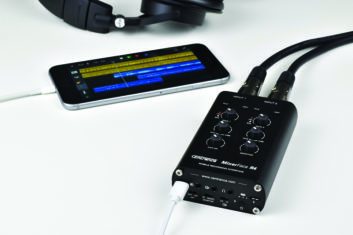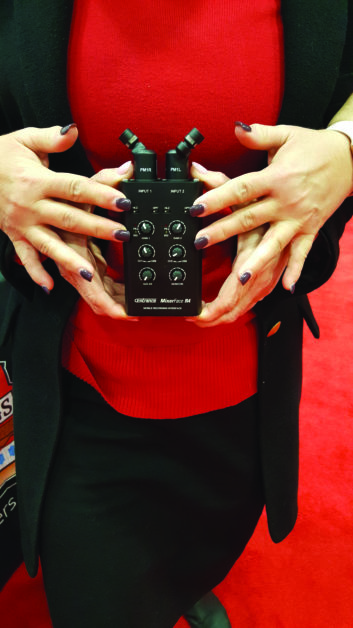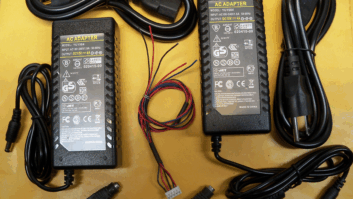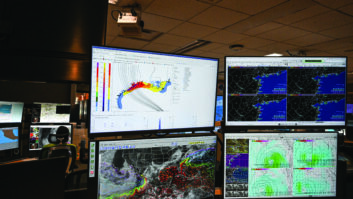Frequent Workbench contributor and consultant Frank Hertel of Newman-Kees is not one to brag, but he has quite a bit of experience in dealing with mice. After 50+ years of servicing some really bad transmitter sites, he has a number of tips to share with readers.

- Inspect the seals of all doors and windows and cable entries to the outside world, to ensure they fit tight.
- Screen all fan openings and air exits with 1/4-inch galvanized hardware mesh, to keep critters out.
- Make sure to plug the main electrical service entry conduits with stainless steel wool or copper wool and caulk. (Mice will eat through caulk alone.)
- Resist the temptation to “dress up” your site by adding dropped ceilings; they provide an ideal location for nesting of mice.
- Never take food or soft drinks into the building. Even a few crumbs or an empty soda can will invite mice.
- The same is true for any food-scented wrappers or containers. Keep them out of the transmitter building. Also use a trash can with a tight seal to dispose of everything. Better yet, always take your trash with you as you leave a transmitter building.
- Realize that food scents in the building can entice mice. They will gnaw through some types of exterior wall surfaces if they get even the slightest scent of food.
- Don’t use rodent bait; it actually attracts mice! And although it works, many times the mice often crawl off into some secluded space to die and make the building smell. Furthermore, most rodent bait will decompose over time and turn to dust — which you end up breathing. If you ever go to a transmitter site and find they have used mouse bait, don’t ever sweep or vacuum the floor without a respirator.
- Instead of rodent bait, use something safe like “Peppermint Oil” to repel mice. It works! Here’s a video example showing its effectiveness.
- On visits to infested sites, be sure to take a change of clothes and a bag to put your dirty clothes in! Otherwise you are infesting your vehicle with all the nasty stuff from the transmitter building.
- Carry a jug of water, a bar of soap, a roll of paper towels and a bottle of alcohol, and clean yourself when leaving and before getting into your vehicle. This is especially helpful if you take a break to eat.
[Don’t Let Mice Kill Your Transmitter]
Frank adds that he has a personal reason for helping you to manage your exposure to rodents.
For a long time, he suffered from an unusual medical condition. Whenever he at something sweet or drank a sugary drink, he would get an extreme pain where his esophagus entered his stomach. He tolerated this for 25 years, and had a number of tests during those 25 years; nothing was diagnosed.
One Thanksgiving, after eating a couple of those miniature Hershey bars, Frank was in deep distress and was taken to the hospital. Initially, the doctors thought it was a heart attack. Among the tests they performed was a “bore scope” down Frank’s throat. When Frank awoke from the anesthesia, the doctor had identified the problem: five small bacterial-based ulcers. Frank asked whether exposure to mouse bacteria, from contact with urine and droppings dust, could have caused the problem. The doctor’s reply was an emphatic “YES!”
A 20-day treatment with Amoxicillin worked. But Frank no longer views mouse-infested transmitter sites the same way. His business does not provide routine service/maintenance; he is usually called in just for an emergency, and too many facilities have not had routine cleaning.
He now carries a face mask and respirator in his vehicle. Mice are not to be taken lightly. More than just your equipment is at risk.
* * *
Wiring maven Steve Lampen attended a recent tips webinar sponsored by Telos. From our discussion of AoIP installations and the tons of analog wiring that is usually removed, Steve suggested that engineers Google “copper scrap reclamation” for information on turning your old wire into money.
A recent Bloomberg headline stated, “Copper Tapped as the Next Big Metals Trade of 2020.”
* * *

I was commiserating with an engineer about remote broadcasts of the 1960s and ’70s and how they’ve changed. Many stations load their jocks up with a tablet or a smartphone, and it’s show time! Even the gear required for news interviews has been simplified thanks to several codec manufacturers.
Using a smartphone for an interview is fine, but there are times where you’d like to mix two signals. That’s where CEntrance comes in.
The MixerFace R4, pictured in Fig. 1, is a high-quality mixer, recorder and USB interface. The rugged metal enclosure is about the size of a smartphone, and can record to an SD card or the phone.

In addition to gain and monitor controls, each channel has a switchable high-pass filter (to reduce on-location wind noise) as well as a Hi-Z/Low-Z selector switch for each channel. Longer recording sessions are assured with an 8 hour battery.
The MixerFace R4 is available through broadcast distributor Broadcasters General Store, which is sponsoring a fun contest. Look at Fig. 2. The first person identifying the hands holding the MixerFace R4 will win a $25 coffee card. Send your entry to my email and maybe include a tip or a picture of something to share from your gallery (not required). Only one winner, and the time/date stamp on your email will be the determining factor.
Earn recertification credit when you share a tip published in Workbench. Thank you for sharing your tips and high-resolution photos by sending them to [email protected].
John Bisset has spent 50 years in the broadcasting industry and is still learning. He handles western U.S. radio sales for the Telos Alliance. He holds CPBE certification with the Society of Broadcast Engineers and is a past recipient of the SBE’s Educator of the Year Award.







